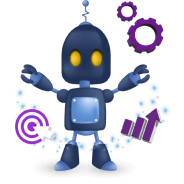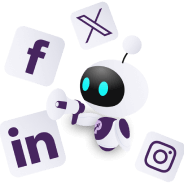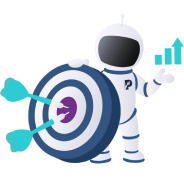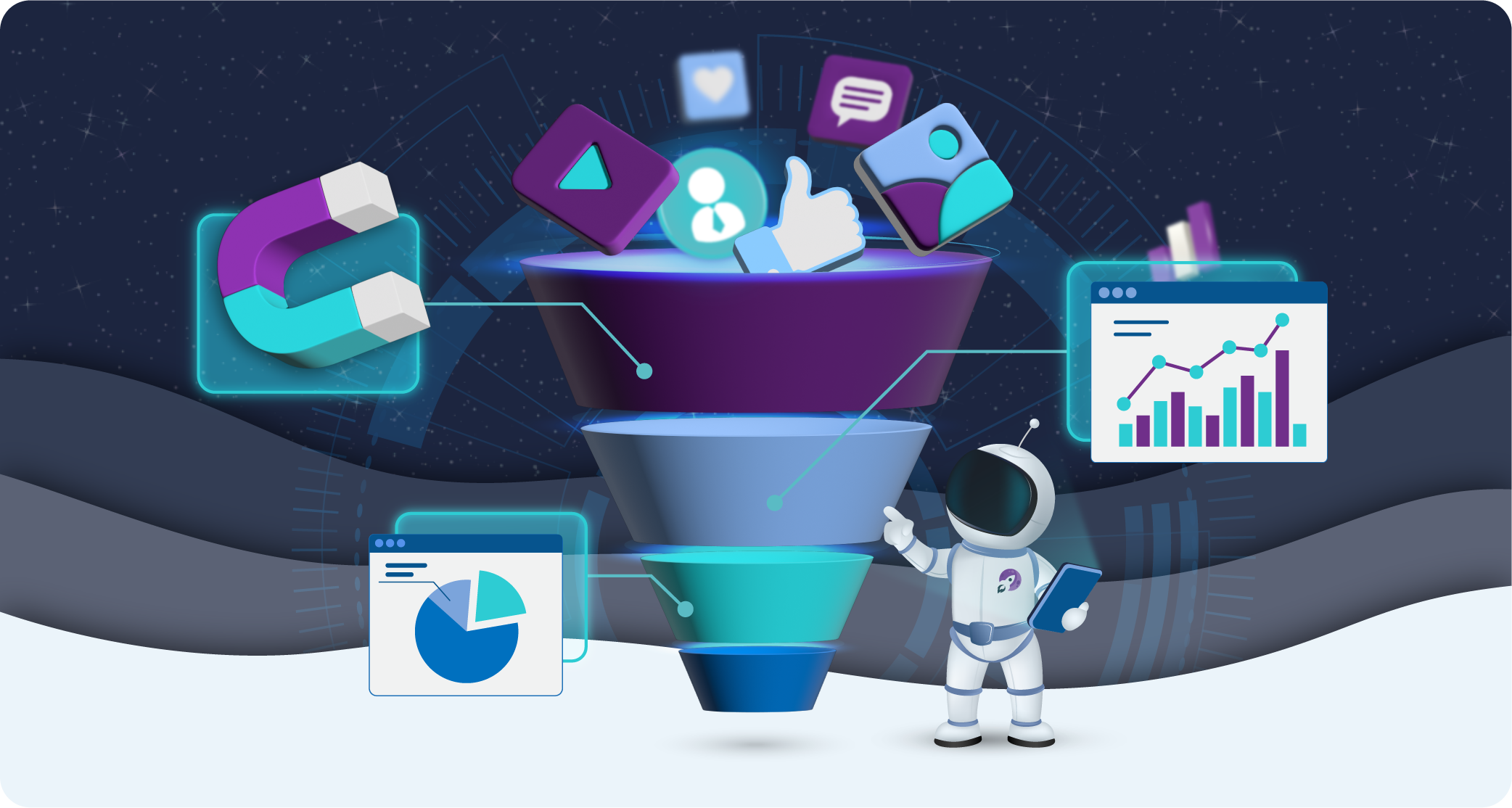

Content Marketing Funnels: 7 Stages to Guide Your Audience to Conversion
Key takeaways
-
Create different types of content for each stage of the customer journey. While social media posts can attract new audiences, in-depth guides will nurture interest.
-
Instead of focusing on direct promotion, create content that builds trust, educates potential customers, and demonstrates how you’ll solve their pain points.
-
Content can still engage customers after they’ve converted, so don’t forget about post-purchase advocacy and loyalty.
We’ve previously discussed sales and marketing funnels on this blog, and they’re a widely known model for organising the customer journey. However, it’s beneficial to be more specific if your business relies more on content marketing than other practices.
The content marketing funnel is essentially the same as any sales or marketing funnel, with it having the stages of awareness, interest, consideration, and conversion as its backbone. Yet, most information about sales funnels will assume you’re using more direct sales tactics. A content marketing funnel differs in the details about the tactics you use i.e., content.
Businesses that rely on content marketing do so because their customers have different expectations, needs, and decision-making processes. For instance, a B2B service provider may attract customers who actively seek out solutions and expect direct pitches. In contrast, consumers shopping for products in health, sustainability, or fitness, for example, often require more education and trust-building through content before making a purchase.
Acknowledging this bigger need for content means we can create funnels that are more effective at guiding prospects to conversion. For example, you might choose to create blog posts or social media content for the awareness stage and in-depth guides for consideration.
This blog will go into further detail about the content you can provide for each stage, nurturing leads more effectively and also driving long-term loyalty. We’ll also give you some tips for measuring your efforts at each stage. Let’s dive in:
Content marketing at the heart of your strategy
When you decide to make content an integral part of your marketing strategy and use it considerately, you can see results in branding, customer experience, sales, loyalty, and more.
Unfortunately, it’s common for content to be an afterthought, with businesses publishing sporadic blog posts or social media updates without a clear purpose. This disorganised approach fails to establish authority, whilst being more dedicated can give you a competitive edge.
For content marketing to drive significant results, however, it must align with your business objectives. Whether the goal is lead generation, customer retention, thought leadership, or brand differentiation, every piece of content should have a clear role. Chasing trends or producing content for the sake of visibility often dilutes messaging and wastes resources. Instead, businesses should focus on creating content with intent, that resonates with their audiences.
Content isn’t just about brand discovery at the top of the funnel; it plays a role at every stage of the customer journey. From initial awareness to conversion, retention, and advocacy, content can guide customers seamlessly through each touchpoint. Educational resources, case studies, customer success stories, and post-purchase engagement strategies all help nurture relationships beyond the first interaction.
Rather than thinking in terms of isolated content pieces, businesses should build a content ecosystem. This is a sustainable, interconnected strategy that consistently serves their audience’s needs.
To sum up, content isn’t just promotional; it’s educational, relational, and experiential, shaping how people perceive and engage with a brand. The most effective content strategies are intentional and adaptive. We’ll now explore the 7 stages of a content marketing funnel, helping you create a strategy that gets the most value out of content.
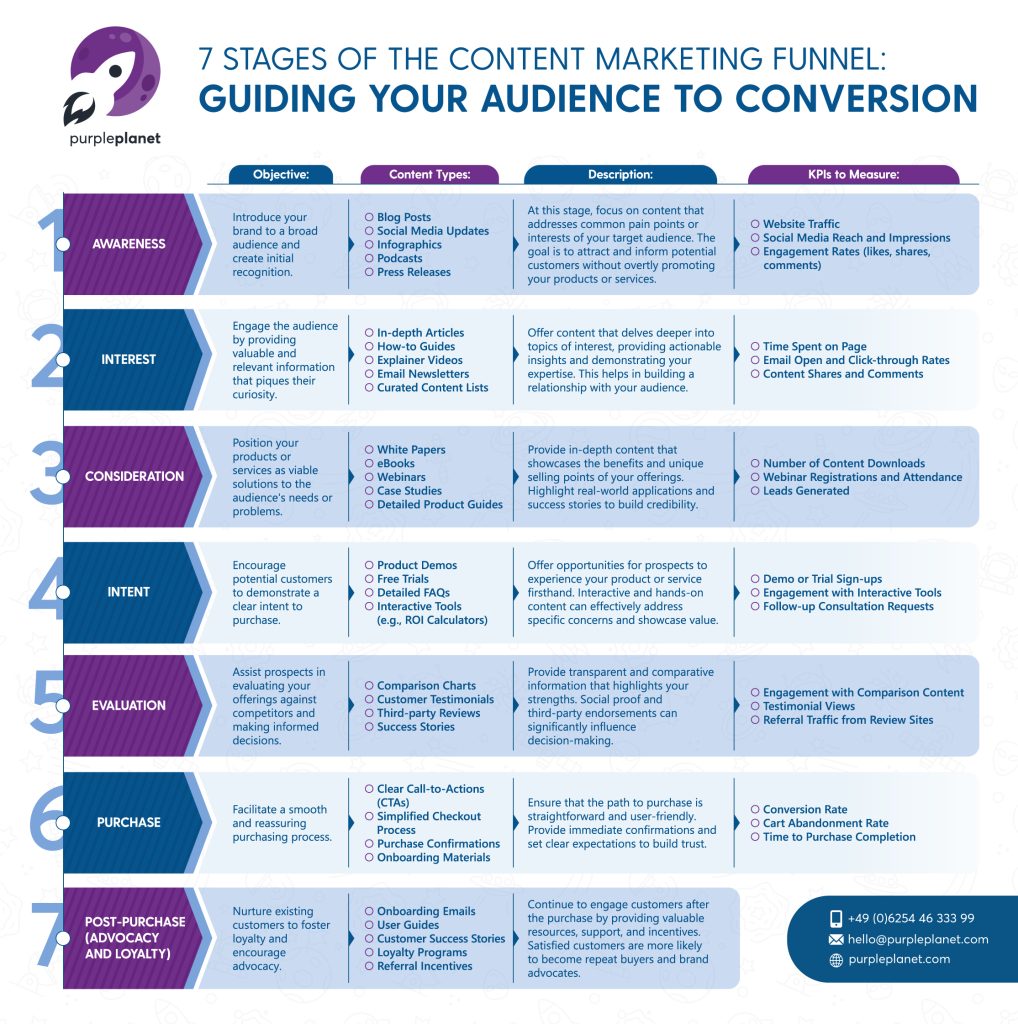
7 stages of a content marketing funnel
1. Awareness
At the awareness stage, you’re aiming to introduce your brand and offering to new audiences, sparking recognition and initial understanding.
The ideal content types to support you at the awareness stage include:
- Blog posts
- Social media updates
- Videos
- Infographics
- Podcasts
- Press releases
Using SEO and social media best practices at the awareness stage will help increase your visibility more effectively, giving these early efforts the best chance. Make sure that the content you publish addresses the pain points of your customers or the topics they care about, as these are most likely to grab their attention.
Awareness stage content should also tell your brand’s story and express its personality, as these are most likely to create an emotional connection. Read this blog to learn more about imbuing your content with brand values.
When it comes to measuring the success of your efforts at this stage, you’ll want to keep an eye on 1) website traffic, 2) social media reach, 3) impressions, and 4) engagement rates. These KPIs will give you a good idea of how far your efforts are going and an initial understanding of audience interest.
2. Interest
At the interest stage, you need to provide more value to your audience, as this will capture their attention more firmly than their first encounter with you.
To support building interest at this point, you should create content like:
- In-depth articles
- How-to guides
- Explainer videos
- Email newsletters
- Curated content lists
These types of content will educate and entertain your audience; you want to deepen their understanding of you (or a particular subject). Content like guides or checklists could be made downloadable, as these encourage people to sign up for your mailing list (aka ‘lead magnets’).
Similarly to before, the topics should be tailored to audience pain points and curiosities. To gauge audience interest at this stage, you’ll benefit from monitoring 1) time on site, 2) email open rates, 3) comments, and 4) social shares.
3. Consideration
For leads in the consideration stage, your content must demonstrate how your offering solves their problem. The following content types are ideal for this purpose:
- White papers
- eBooks
- Webinars
- Case studies
- Detailed product guides
Work hard on this content to ensure it positions you as a trustworthy expert. You might offer resources that compare solutions, showing off your confidence that your business is superior to competitors. At this stage, you might also choose to segment your audience, especially if it makes sense to deliver personalised content for specific audience needs.
Measures of success at this point include 1) email click-through rates, 2) webinar sign-ups (and attendance), and 3) downloads of gated content. These figures will tell you in concrete terms how many leads want to learn more about you and how effectively your content is nurturing them to explore your offering.
4. Intent
At this stage, your content must support leads in their evaluation of you by providing further information and interaction. For example:
- Product demos
- Free trials
- Detailed FAQs
- Interactive tools (like ROI calculators or quizzes)
These content types give leads more interaction with your offering, showcasing key features and solutions to their pain points. If you haven’t yet created comparison guides, to show how your product or solution stacks up against competitors, this is an ideal time to do so. To make sure your content thoroughly answers any queries leads might have, go back over historical questions from enquiring leads and embed them in your new content. You might also justify your price by demonstrating value over time, as leads may be on the fence for financial reasons.
Furthermore, some leads will have dropped off by this point in the funnel. You can use retargeting content such as personalised email campaigns to re-engage this portion of your audience.
Measuring your success at this stage is similar to the consideration stage, except that the content type has changed. For instance, you should still measure 1) engagement with your interactive content, 2) sign-ups for free trials, and 3) demo requests.
5. Decision
At this critical point in the customer journey, you can provide content that helps them overcome any lingering doubts and solidify their decision. The most effective content to achieve this includes:
- Customer testimonials
- Case studies
- Reviews
- Detailed product specifications
- Expert interviews
Showcasing real-life success stories of ROI will give your offering credibility, perhaps more so than demos and free trials. Leveraging social proof such as user reviews and expert endorsements will boost the confidence of leads and can often be the final deciding factor. At this point you also want to make it as easy as possible for common objections to be answered and rebutted; so, you could offer Q&A sessions or additional detailed content.
To tell whether your efforts at this stage are working, have a look at 1) conversion rates from this stage’s content and 2) the amount of engagement received on testimonial and review pages.
6. Conversion
Now that your leads have decided to convert, you want to make it super easy for them to complete their intended action. The content that can help you at this stage includes:
- Limited time offers
- Straightforward calls-to-action (CTAs)
- Web pages with no-frills copy that helps leads navigate to checkout
To avoid abandoned carts and create a seamless conversion experience, your website and landing pages should be optimised. Of course, this is helped by minimal distractions and fast load times, but your content can assist by being clear and straightforward. You might choose to create a sense of urgency, if that’s your style.
To assess the efficacy of your conversion stage efforts, 1) conversion rate will be highly useful. You’ll also benefit from measuring 2) bounce rate on your landing pages and 3) the number of completed purchases or sign-ups. As always, A/B testing can help refine your messages to get the most effective version of your content.
7. Post-conversion engagement and advocacy
Technically, leads reach the end of the funnel once they’ve converted, but it’s useful to consider what happens next. Certain types of content can contribute to further activity for your business, creating a continuous cycle.
After customers have converted, you can continue to engage them, foster their loyalty, and encourage them to advocate for your brand. Depending on the nature of your business, you could create some of the following to nurture customers post-sale:
- Onboarding emails
- User guides
- Customer success stories
- Loyalty programs
- Subscription programs
- Referral incentives
- Birthday discounts
First of all, you should prioritise giving excellent post-purchase support. This could involve an optimised delivery operation, keeping customers in the loop every step of the way; or it could include an easy-to-access customer service line. Make sure you encourage reviews, testimonials, and social sharing. This will amplify your brand’s reputation and also provide more social proof for the future.
Post-conversion, you can look at 1) customer retention rate, 2) referral and advocacy metrics, and 3) customer satisfaction scores to gauge how happy customers are with you and what you’re offering.
Final thoughts
With an understanding of what you can hope to achieve at each stage of the content marketing funnel, you should be able to develop a new content strategy that engages your leads more effectively. Knowing what part of their journey they’re at is crucial so that the content you create accurately addresses their concerns.
Make use of KPIs along the way and track the performance of your efforts so that you have a thorough understanding of what’s working. Of course, always double down on what’s working and optimise the weaker spots.
For further assistance with your content marketing needs, reach out to us here at purpleplanet. We offer a whole suite of digital solutions:
